Gomti River in Crisis: A Toxic Flow Through Lucknow
By Ram Dutt Tripathi
The Gomti River, once a symbol of life and culture in Awadh, is now a toxic stream flowing through the state capital Lucknow. The river is now choking under the weight of sewage , toxins and institutional neglect.
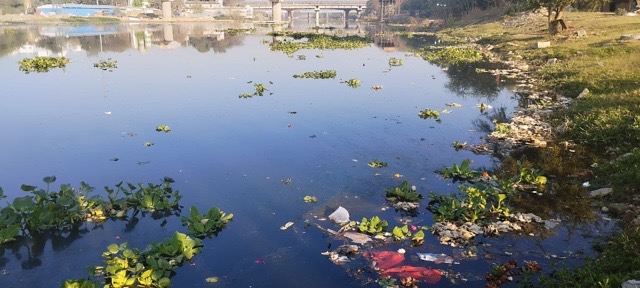
Recent scientific assessments and joint field survey reveal the river has degraded into a slow moving sewage channel, unfit even for irrigation, let alone drinking or bathing.
Despite over three decades of publicly funded “cleaning” drives, crores of rupees spent, and multiple government schemes, the river’s condition has gone from bad to worse.
Public Money Down the Drain
Since the 1990s, schemes like the Gomti Action Plan, Namami Gange, and Smart City projects have promised river rejuvenation. Yet the results are painfully clear: the river is more polluted, more lifeless, and more dangerousthan ever before.
The Dirty Truth: Facts on Ground
It’s a grim and alarming reality — the Gomti River, once considered the lifeline of Lucknow, is now battling for survival. Once a serene and sacred tributary of the Ganga, the river is today drowning in pollution, choked by sewage, and rendered nearly lifeless in several urban stretches.
Toxic Waters : data that Shocks
• Faecal coliform bacteria, a direct indicator of sewage contamination, has reached dangerously high levels — between 49,000 to 79,000 MPN/100 ml, far exceeding the permissible limit of 2,500 MPN/100 ml for safe bathing water.
• Dissolved Oxygen (DO) levels — critical for aquatic survival — have dropped to 2.9 mg/l at Kudiaghat and a shockingly low 1.6 mg/l at Pipraghat. For context, any value below 5 mg/l is considered hostile for fish and aquatic organisms.
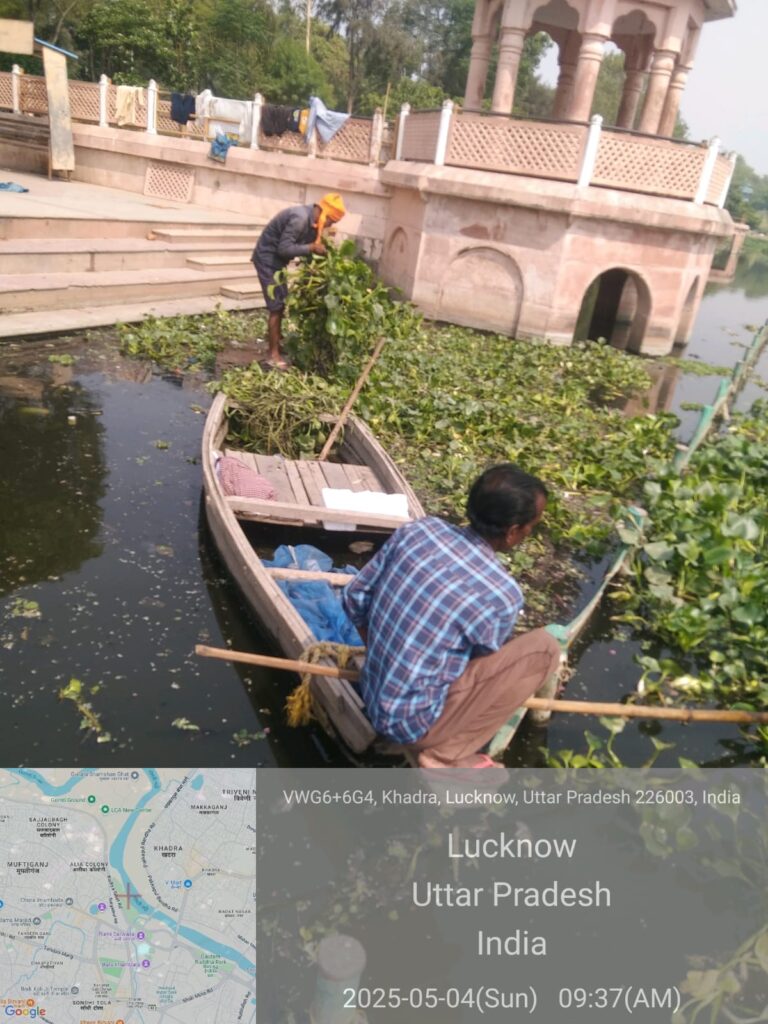
At various points, the river surface is now layered with toxic foam, thick mats of water hyacinth, and floating waste, signaling the scale of untreated organic and chemical pollutants.
A joint drone and ground survey led by Prof. Venkatesh Dutta , Head of Environmental Sciences at Babasaheb Bhimrao Ambedkar University , revealed methane and nitrous oxide bubbles emerging from the riverbed upstream of Kudia Ghat . This is clear sign of anaerobic decomposition caused by continuous discharge of untreated and partially treated sewage, particularly from sarkata Nala.
“The total and faecal coliform counts are in lakhs. The water is not even suitable for irrigation anymore , let alone for human contact” warned Prof Dutta.
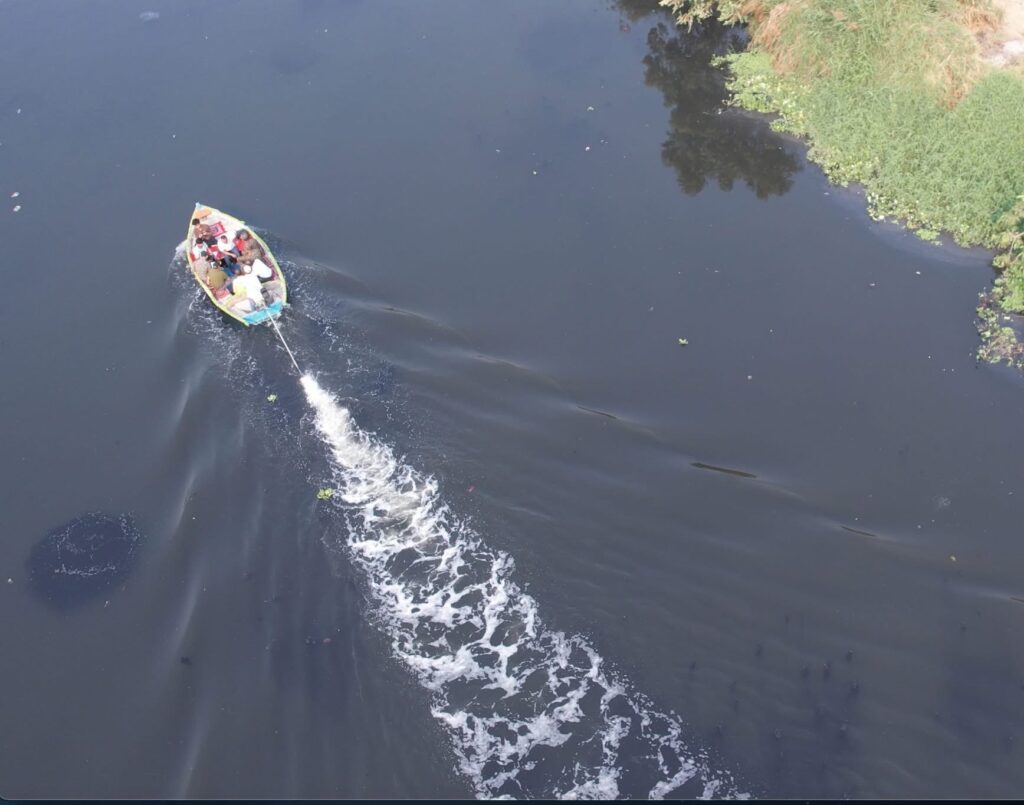
Widespread Ecological Degradation
Last month a joint , a joint ecological survey was carried out by representatives of Nagar Nigam Lucknow , BABU and the 137 composite ecological Task Force ( Territorial Army ) 39 Gorkha Rifles . The team included Shri Manoj Prabhat ( Chief Engineer E & M ) , Prof Dutta , Colonel Arvind Prasad S , and Major Kanwardeep Singh Nagi of the Gomti Task Force.
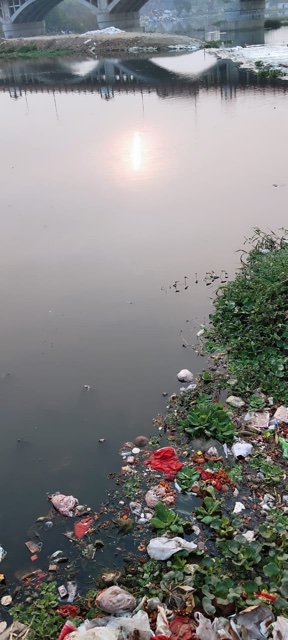
Key observations included :
Massive ritual waste dumping at Kudia Ghat , worsening river contamination.
Water hyacinth infestation near Pakka Pul and gau Ghat choking the flow.
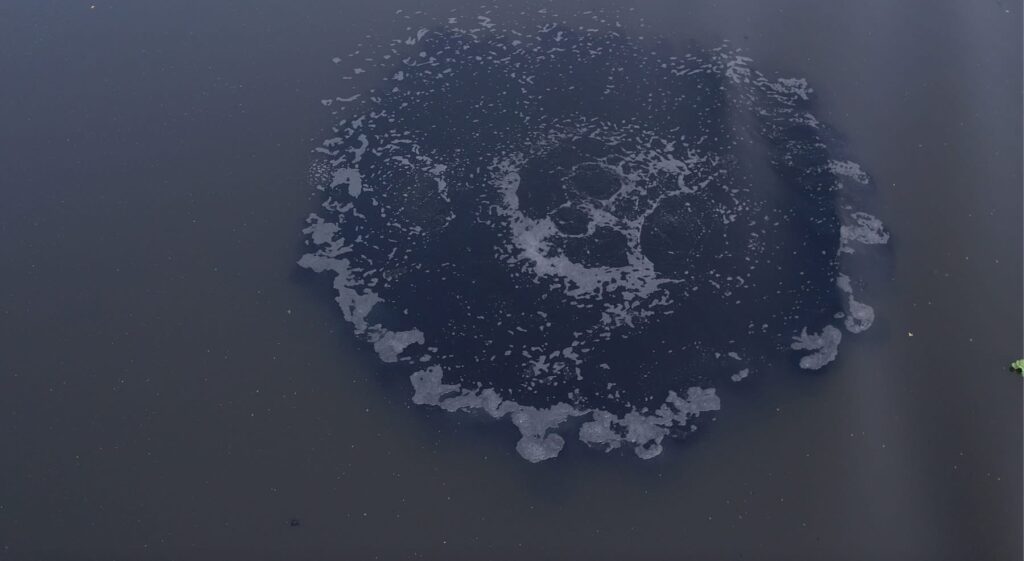
Visible methane release and untreated sewage flowing directly into the river from Fazullaganj and Maheshganj drains .
This means the Sewage Treatment Plants are simply not working due to less capacity or other reasons and untreated sewage is going to the river directly or indirectly.
And yet, there’s no accountability for the funds spent or the environmental disaster unfolding.
Health Emergency in the Making
The rising bacterial load triggers an alarming increase in water-borne diseases every year — especially jaundice, gastroenteritis, diarrhea, and skin infections — among communities living close to the river.
Doctors in public hospitals have been reporting seasonal spikes in water-related ailments, particularly after monsoons, when sewage overflows mix with floodwater.
Downstream Villages: The Forgotten Victims
Beyond the city limits, dozens of villages downstream, are bearing the brunt of Lucknow’s untreated waste.
• Farmers are forced to use polluted Gomti water for irrigation, affecting soil quality and crop yield.
• Women and children who fetch water or bathe in the river suffer the most.
• Groundwater near the river has also shown signs of contamination, impacting drinking water in rural handpumps.
And yet, these people have no voice in policy decisions, and no say in how funds are spent.
Why Has the Gomti Cleanup Failed?
1. Mismanagement of Sewage Projects – Treatment plants either underperform or remain underutilized.
2. No Industrial Regulation – Polluting units continue to discharge waste without fear.
3. Cosmetic Riverfront Projects – Money is spent on beautification, not ecological restoration.
4. Concrete Riverfront Development:
Infrastructure projects have narrowed and channelized the river, reducing its natural flow and self-cleansing capacity. Encroachments have destroyed floodplains and disconnected the river from its ecological buffers.
5 Zero Community Involvement – Local citizens, farmers, and riverbank communities are excluded from planning.
Conclusion: It’s Not Just a River Dying — It’s Governance Itself.
The Gomti crisis is a mirror to the broader failure of environmental governance in India. A river cannot be revived with concrete, photo-ops, or press releases. It needs honest governance, scientific planning, and people’s participation.
Until then, the Gomti will remain a polluted graveyard — not of fish and frogs alone, but of failed promises.
Key Takeaways
• Failure of governance and accountability
• Worsening public health crisis
• Impact on downstream rural communities
• Wasted public money despite decades of “cleaning” efforts
Note : Please write how Gomti River pollution is affecting the society and what needs to be done.

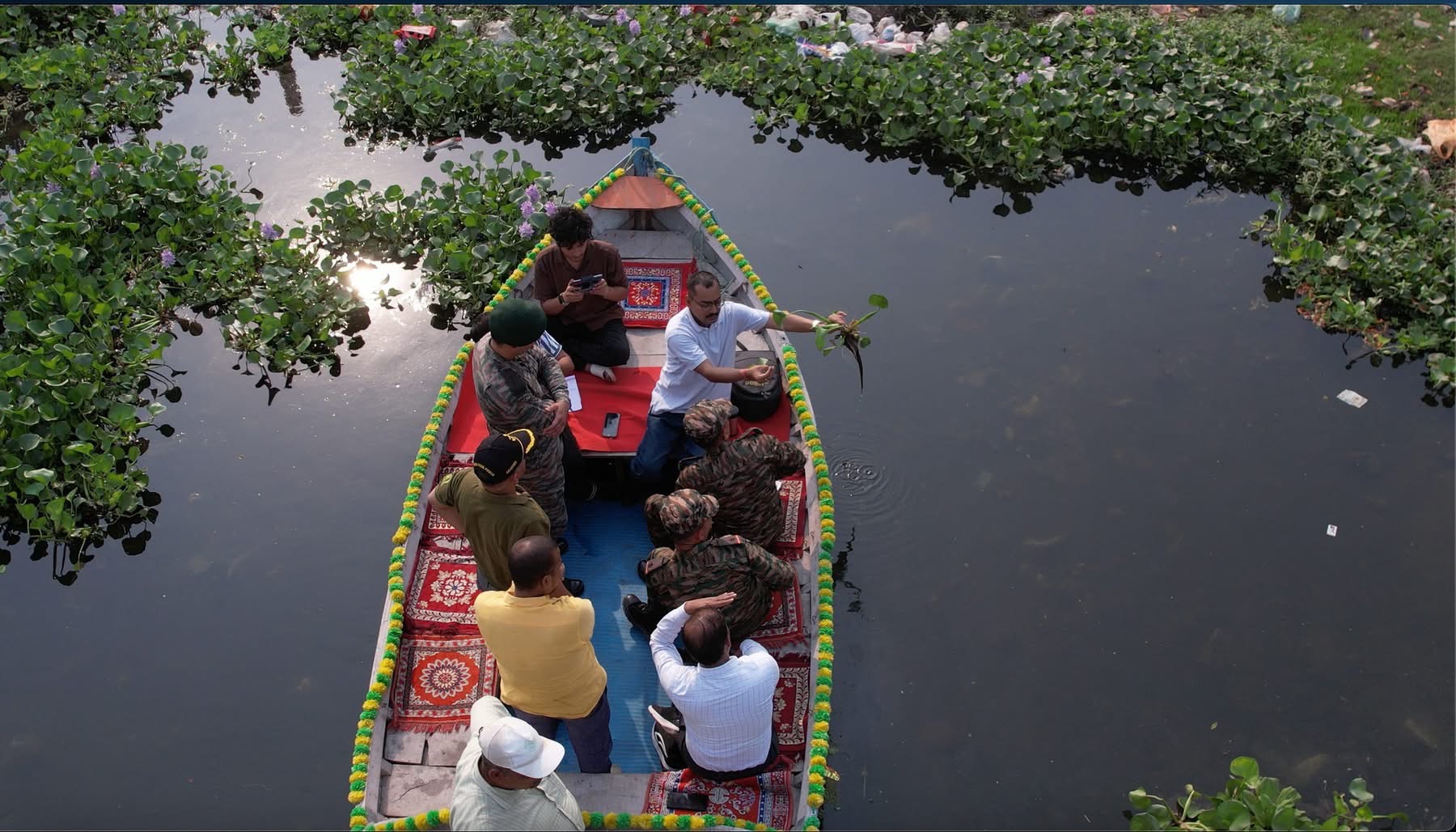
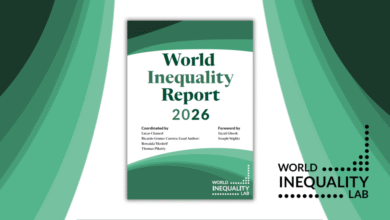

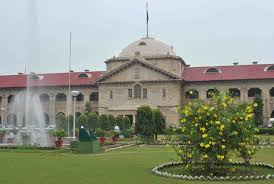
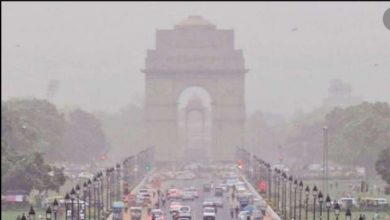
A Wake-Up Call for Gomti
During my visits to the upstream stretches of the Gomti—before it enters the city—and across various stages of its flow through Lucknow, one fact stood out starkly: while we, the citizens, express deep concern over the river’s worsening water quality, the harsh truth is that we ourselves are the chief offenders.
The system entrusted with safeguarding Gomti—be it sewage management, industrial regulation, or civic responsibility—has failed to deliver. Sewage continues to flow untreated, pollutants from commercial establishments go unchecked, and individual apathy remains rampant.
This is no longer a matter of concern; it’s a crisis demanding immediate enforcement action. Authorities must wake up to their role and take strict, result-oriented steps. At the same time, the government must extend full support—technical, financial, and administrative—to ensure that the mechanisms in place don’t just exist on paper, but function on the ground.
The time for rhetoric is over. It’s time to act—decisively, collectively, and now.